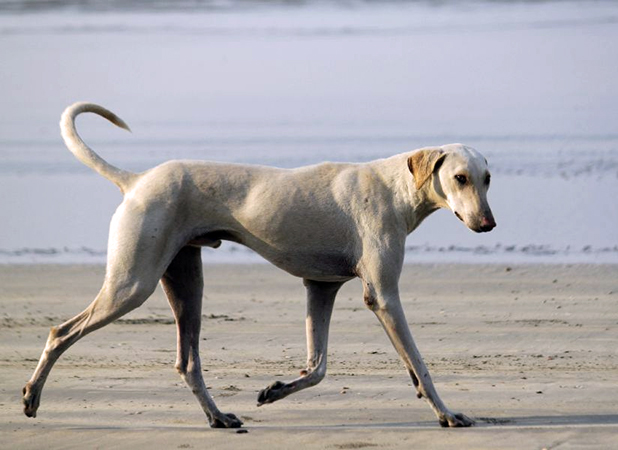Are you planning to adopt a pup with a charming appearance and affectionate nature? If yes, French Bulldogs are on the top. These cute and cuddly French Bulldogs are the 4th most popular breed in the US for a pet after the Beagle, Poodle, and Yorkie in recent years. But it is one of the most expensive dog breeds; if you are considering it, you must know the French Bulldog price, food expenses, and vet bills together.
Before you set your heart and mind to bring one home, look at some of the facts and basic information about it. It would help you make an informed decision before purchasing or adopting a French Bulldog.
Everything one should know about French Bulldog
Origin
The French Bulldog’s origin traces back to 19th-century England. At that time, they were popular work companions for English lace workers who moved to France during the Industrial Revolution along with their bulldogs. This breed gained popularity in no time in France and crossbred with local terrier breeds and acquired its distinctive features.
In 1898 the American Kennel Club (AKC) officially recognized the French Bulldog, acknowledging its increasing popularity. Dog enthusiasts loved this breed in the US throughout the 20th century. Even today, the French Bulldog is a beloved companion breed worldwide.

Type/Breed Mix
French Bulldog comes in different coat colors and patterns. It also has variations in eye color, mask color, and paw color. You can find various dog breeds mixed with it, like
Poodle and French Bulldog – French Boodle
French boodles are mixed breeds of poodles and French bulldogs. They are intelligent, playful, and have affectionate, friendly characteristics. They are best fit in a family with kids.
Rottweiler and French Bulldog – French Bullweiler
French Bullweiler is a hybrid of the Rottweiler and French Bulldog breeds with medium to large sizes. They also have short and dense coats, making them low maintenance breed.
Pitbull and French Bulldog – French Pitbulldog
French Pitbulldog is a cross between the American Pitbull and French Bulldog. This breed is strong and regal in appearance but gentle and patient in nature.
Lifespan, appearance, height, and weight
The French Bulldog lives up to 10 – 12 years. If we talk about its appearance, it looks like a miniature bulldog except for its large, erect ‘bat ears. These are the French Bulldog breed’s trademark features. The head size is big and square, with heavy wrinkles twirled over their extremely short nose. The body under the glossy and firm coat is sturdy and muscular.
The most common coat color of a French Bulldog is black and shades of fawn, but you can also find Frenchie puppies with cream, chocolate or brown, white, blue/grey, sable, and even brindle coats. They can grow up to 11 inches to 1 foot tall and weigh around 19 – 28 pounds.

Grooming Needs
French Bulldog is an average shedder and loses their undercoat, mainly in Spring and Fall. You might not require extensive grooming, but you must spend some time on its monthly upkeep.
- Brush their coat once a week to keep it shiny and healthy.
- Clip their toenails monthly once as it does not wear down toenails naturally
- Brush their teeth multiple times a week to keep their teeth and gums healthy and prevent tooth loss
- Regular cleaning of their ears
- Bathing them at least once a month and as needed
Temperament, Personality, and Training
Undoubtedly, French Bulldogs are a loveable breed. But it is crucial to understand their temperament and personality and provide adequate training before welcoming them into your life.
- Temperament: This dog breed is gentle and has a friendly temperament. French Bulldogs are perfect family dogs because of their loyalty, loving nature, and ability to develop a strong bond with humans. They are good companions for kids due to their petite size, impish attitude, and gentle temperament. However, ensure you do not leave French Bulldog and your young children unsupervised together.
- Personality Traits: Here is a list of common French bulldogs’ personality traits
- Playful: French Bulldogs have playful traits. As they age, they become lovely partners for playtime and games.
- Stubbornness: The stubborn trait of French Bulldogs makes training a daunting task. They love to do things according to them and are not interested in following commands. It would be best to have patience and a keep positive attitude while training a French bulldog.
- Protective: French Bulldogs love their family member and feel defensive about them. Early socialization and proper training are required to channel this feeling positively. Besides these, French Bulldogs are a little energetic. They feel quite content with lounging around as long as they exercise regularly.
- Training: It would help if you were patient and consistent and always used a positive approach to train French Bulldogs. Harsh training techniques can backfire and make building trust between dog and owner hard. Positive reinforcement, consistency, and short training sessions are the key to training French bulldogs.
Which are French bulldog health issues?
They can have health concerns associated with their spines and noses. They can also have difficulty breathing due to their short face. Moreover, they also have less tolerance to heat, exercise, and stress.
Some of the common health ailments in French Bulldog include:
- Hip Dysplasia
- Brachycephalic Syndrome
- Allergies
- Intervertebral Disc Disease (IVDD)
- Blood disorders like Von Willebrand’s Disease

French Bulldog Puppies Cost
Initial Cost
Fresh bulldogs are famous as the best companion dogs because of their captivating appearance and distinctive personality traits.
French Bulldogs are expensive, and the cost of French bulldogs depends on various factors like the dog’s pedigree, lineage, breeder reputation, location, and the specific characteristics of the puppy (color, markings, etc.).
The average cost of a French Bulldog is anywhere between $1,500 to $8,000 if you get it from a breeder. Its prices rise with a unique breeding history costing a top-quality French Bulldog puppy from $5,500 to $10,000.
On the other hand, if you get it from a rescue, it can start at around $250 but can go as high as $750 depending on the organization, the dog’s age, health, and background. In case of adoption, the French Bulldog puppies can cost $350-$550 (including registrations and vaccinations).
Food Expenses
You must recognize food expenses when planning to bring one into your life. Food comes under recurring costs and requirements depending on size and activity level.
On average, a French Bulldog eats roughly 1 1/2 o 2 1/2 cups of food daily, and assuming you give it premium-quality food– it comes to around $2-$3 per pound. A 30-pound bag gives 120 cups of food and costs $55. So, every two months, you must spend $55 to $60 for food for a French Bulldog. Additionally, you give treats. It’s an extra spend of $5-$10/bag for a pup. You can consult a vet before choosing food for your French Bulldog.
Before food, you must buy bowls to offer food and water. Choose firm, easily washable, and made of ceramic or steel. It can cost you around $10 to $30 or even more.











